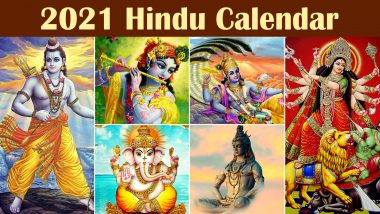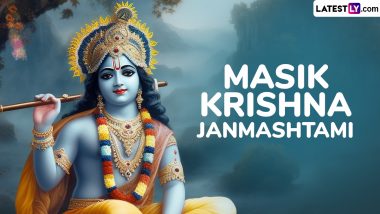Lala Ramswaroop Ramnarayan Panchang or Calendar 2021 For Free PDF Download Online: January 1 marks the first day of a New Year as per the Gregorian calendar, most used calendar in the world. However, Hindu calendar or panchang (also called panchangam) are traditionally used in the Indian subcontinent with further regional variations for social and Hindu religious occasions. Lala Ramswaroop Ramnarayan Panchang (लाला रामस्वरूप रामनारायन पंचांग) or just, Lala Ramswaroop Calendar is a popular Hindu astrological almanac, which is popularly used by practising Hindus. This is why ahead of the New Year 2021, the search for Vikram Samvat 2077 Lala Ramswaroop Calendar 2021 for free PDF download online increases manifold. After all, it is not only important to know the tithi (date) of major festivals but also the shubh muhurat (auspicious timings) to perform puja vidhi (rituals). Here we bring you Lala Ramswaroop Calendar 2021 for free download in PDF format. Apart from giving details about tyohar (festivals), it also contains information on Hindu fasts or Vrat, rashifal (Horoscope) bank holidays, auspicious beginning (विशेष मुहूर्त), nakshatra and so much more. Download 2021 Festivals and Events Calendar!
The lunisolar Vikram Samvat calendar is 56.7 years ahead of the solar Gregorian calendar; the year 2077 BS began in 2020 CE, and will end in 2021 CE. A typical Panchangam comprises of 5 elements or meaning "five attributes" of the day: Tithi (lunar day), Vara (day of the week), Yoga (Luni-Solar combination or an auspicious moment), Nakshatra (constellation or group of stars) and Karana (half part of a Tithi). What makes Lala Ramswaroop Panchang so popular is that they make it easy for a common man to understand the otherwise complicated Indian Vedic astrology. Lala Ramswaroop Calendar 2021 presents us with chandra sthiti, mudra stithi, grah stithi (planetary positions), rashifal, shubh muhurat for weddings as well as to set up new businesses. These are in addition to the major festivals, vrat tithi with shubh muhurat and parana time and other minor secular observances.
It is important people know the names of months or maas as per the Hindu calendar or as mentioned in the Vikram Samvat. These names are in Sanskrit and Nepali. The first month of Hindu lunisolar calendar is Vaisakha or Baisakh, corresponding to April–May in Gregorian calendar. This is the time of the year when Hindus from different regions observe New Year. There are numerous Indian New Year's Days, and here it goes: Navreh or Kashmiri New Year, Gudi Padwa or Maharashtra New Year, Ugadi / Chaitra Sukhladi or Telugu New Year, Cheti Chand/Jhulelal Jayanti/Sindhi New Year, Vaisakhi or Punjabi New Year or Sikh New Year, Puthandu or Tamil New Year, Vishu or Malayalam New Year, Jur Sital or Maithili New Year, Bohag Bihu or Rongali Bihu or Assamese New Year and Pohela Boishakh or Bengali New Year.
The other months to follow after Vaisakha or Baisakh in the Hindu calendar are: Jyaistha or Jestha (May–June), Ashadha or Asar (June–July), Sravana or Sawan (July–August), Bhadrapada or Bhadra (August–September), Asvina or Asoj (September–October), Kartika or Kartik (October–November), Agrahayana or Mangsir (November–December), Pausa or Paush (December–January), Magha or Magh (January–February), Phalguna or Phaggun (February–March) and Chaitra or Chait (March–April).
Some of the biggest Hindu festivals that will be celebrated in these months are Diwali, Holi, Durga Puja, Dussehra, Krishna Janmashtami, Ganesh Chaturthi, Rama Navami, Hanuman Jayanti, Saraswati Puja and so on. Here are the dates of these observances: Diwali 2021 will fall on November 4 (Thursday), Holi 2021 will take place on March 29 (Monday). Durga Puja 2021 will kick off on October 11 (Monday) and last until October 15 (Friday). Vijayadashami or Dussehra 2021 will take place on October 15. Rama Navami 2021 will be celebrated on April 21 (Wednesday). Krishna Janmashtami 2021 will fall on August 30 (Monday), while Ganesha Chaturthi 2021 will take place on September 10 (Friday).
Then, there are important vrat observed monthly. People observe Ekadashi Vrat in Lord Vishnu's honour on the eleventh lunar day of each of the two lunar phases that occur in a Vedic calendar month - the Krishna and Shukla Paksha. Pradosh Vrat is observed to worship Lord Shiva and Parvati, is done in the evening twilight or sandhya kala on the Trayodashi of both lunar fortnights (Shukla and Krishna Paksha). These are the 13th tithi, lunar days, the New Moon (Amavasya), and Full Moon (Poornima).
Sankashti Chaturthi is another auspicious fast observed monthly by Lord Ganesha devotees. This day is observed in every lunar month of the Hindu calendar on the fourth day of Krishna Paksha. If this Chaturthi falls on a Tuesday, it is called Angaraki Sankashti Chaturthi. Masik Shivaratri, another fast dedicated to Lord Shiva is observed on the lunar month's fourteenth day during Krishna Paksha (the waning phase). Masik means 'monthly', and Shivaratri means 'night of Lord Shiva'. Masik Durga Ashtami, dedicated to Goddess Durga is observed every month on the Ashtami Tithi of Shukla Paksha.
Lala Ramswaroop Ramnarayan Panchang will help you get all the information related to festivals, the shubh muhurat to begin the festivities as well as the start and end of a tithi. We have provided you with the link to download the Lala Ramswaroop Calendar 2021 in PDF format above. While this will help you learn about Hindu festivals and observances, you can download the complete 2021 Festivals and Events calendar HERE to learn about other big religious festivals such as Eid al-Fitr or Badi Eid, Guru Nanak Jayanti, Christmas, Parsi New Year and so. And apart from solving your queries on religious observances, it will also help you learn about the number of long weekends in 2021 and help you plan your holidays better. We wish all our readers a very Happy New Year 2021!
(The above story first appeared on LatestLY on Dec 23, 2020 05:02 PM IST. For more news and updates on politics, world, sports, entertainment and lifestyle, log on to our website latestly.com).













 Quickly
Quickly





















